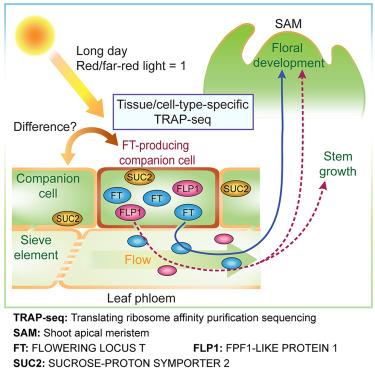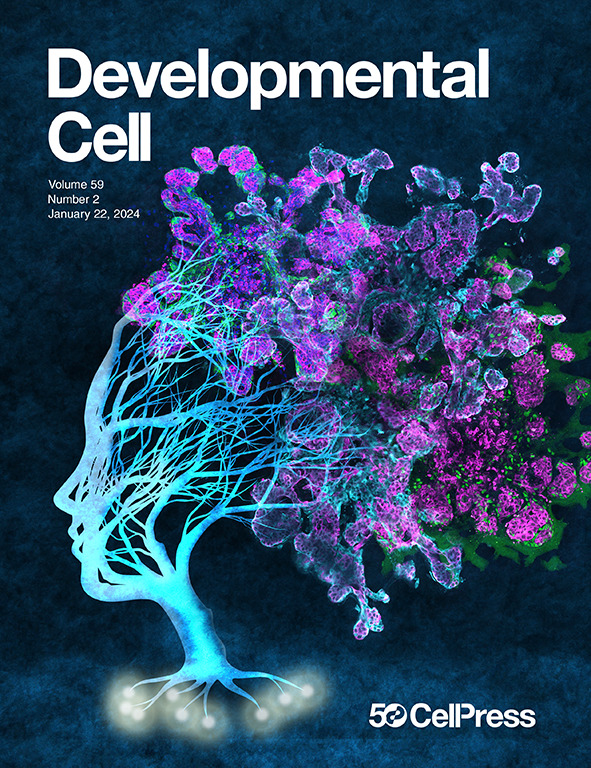Florigen-producing cells express FPF1-LIKE PROTEIN 1 to accelerate flowering and stem growth in Arabidopsis
IF 10.7
1区 生物学
Q1 CELL BIOLOGY
引用次数: 0
Abstract
Plants induce the expression of the florigen FLOWERING LOCUS T (FT) in response to seasonal changes. FT is expressed in a distinct subset of phloem companion cells in Arabidopsis. Using tissue-specific translatome analysis, we discovered that the FT-expressing cells also express FLOWERING PROMOTING FACTOR 1 (FPF1)-LIKE PROTEIN 1 (FLP1), specifically under long-day conditions with the red/far-red ratio of natural sunlight. The master regulator of FT, CONSTANS (CO), is essential for FLP1 expression, suggesting that FLP1 is involved in the photoperiod pathway. We show that FLP1 promotes early flowering independently of FT, is active in the shoot apical meristem, and induces the expression of SEPALLATA3 (SEP3), a key E-class homeotic gene. Unlike FT, FLP1 also facilitates inflorescence stem elongation. Our cumulative evidence suggests that the small FLP1 protein acts as a mobile signal like FT. Taken together, FLP1 accelerates flowering in parallel with FT and orchestrates flowering and stem elongation during the reproductive transition.

求助全文
约1分钟内获得全文
求助全文
来源期刊

Developmental cell
生物-发育生物学
CiteScore
18.90
自引率
1.70%
发文量
203
审稿时长
3-6 weeks
期刊介绍:
Developmental Cell, established in 2001, is a comprehensive journal that explores a wide range of topics in cell and developmental biology. Our publication encompasses work across various disciplines within biology, with a particular emphasis on investigating the intersections between cell biology, developmental biology, and other related fields. Our primary objective is to present research conducted through a cell biological perspective, addressing the essential mechanisms governing cell function, cellular interactions, and responses to the environment. Moreover, we focus on understanding the collective behavior of cells, culminating in the formation of tissues, organs, and whole organisms, while also investigating the consequences of any malfunctions in these intricate processes.
 求助内容:
求助内容: 应助结果提醒方式:
应助结果提醒方式:


